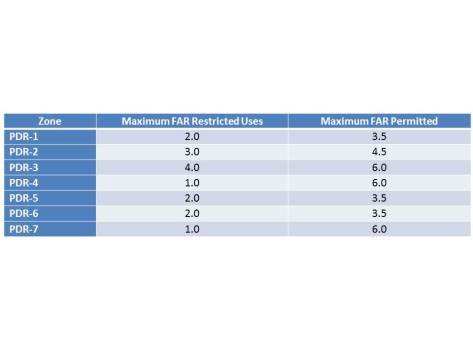The District’s industrial zones, known as Production, Distribution, and Repair (PDR) zones, include a vast array of uses. Chances are you are at least somewhat familiar with the typical industrial uses found in these areas. For example, remember the snowstorms we had last winter? The District’s streets were blanketed by several inches of snow, and the city’s fleet of trucks and salt domes which make driving less treacherous are typically located in our PDR zones. PDR zones also include street repair facilities, warehouses, vehicle maintenance facilities, utilities, and businesses devoted to making or repairing goods. All of these are critical functions needed to support the District’s day-to-day operations, and support many well-paying jobs for DC residents.
However, in addition to the operation and maintenance functions you might find in PDR zones, the District’s industrial areas permit so much more, including places to
Industrial spaces are ideal for many sectors of the District’s emerging small scale “maker” economy because of their layout, location, functionality and low cost. The entrepreneurial “maker” economy consists of small scale, local businesses devoted to the creation and production of goods and services. Growth in the “maker“ economy is closely associated with shared spaces often found in industrial zones that allow for an exchange of ideas, tools and skills. Further, some “maker” uses can only be permitted in the industrial zones due to use restrictions of other zones.
Business opportunities in PDR zones include existing industries and those in emerging sectors–e.g., fresh markets and food production, commercial kitchens, “green” or environmentally-oriented businesses, art studios and galleries, filmmaking, and theater production. Overall, these uses are a critical part of the local economy. In Ward 5 alone, more than 500 businesses located in industrial areas contribute to the local economy and provide District residents with jobs and important services—these businesses support a very different workforce from the city’s prevailing knowledge economy. Food markets provide access to fresh produce and artisanal goods, while local distributors supply restaurants throughout the city. DC’s PDR spaces include new maker uses like Scratch DC which prepares dinner kits that come chopped, measured and marinated and are delivered ready to cook.
The District has seen growth in one particular segment of the maker economy – breweries and distilleries. When entrepreneur Michael Lowe was looking for a place to locate his distillery, New Columbia Distillers (makers of Green Hat Gin), he settled on a 3,500 square foot warehouse, two miles from Union Station and located in an industrial (C-M-1) zone. As Lowe tells it, “we had a hard time finding a space. A former liquor storage warehouse in Ivy City became available that was the perfect size and the price was pretty good. Ivy City was the closest C-M zone to downtown. The space was 100% open inside and had high 15-foot ceilings.”
The Office of Planning has proposed revisions to the zoning code, intended to both preserve and allow for more effective use PDR land. The changes would also more effectively buffer any adjacent residential uses from the impacts of industrial uses, and encourage sustainable practices on PDR land.
First, the proposal includes a provision to limit the Floor Area Ratio (FAR) that can be devoted to non-PDR uses in these zones (the current code does not include FAR limits for non-residential uses as a portion of the project’s total density). (click to enlarge)

As identified in OP’s Ward 5 Works report, a primary issue for many businesses in the District is the high cost of industrial space compared to other areas in the region. This expense is particularly a critical issue for young companies that have not yet achieved their full potential. The Office of Planning’s proposal for PDR zones seeks to preserve the District’s limited supply of industrial land in the hope of continuing to make the city competitive for “maker” economy industries.
Second, the proposal includes a buffer area between PDR land and residentially zoned land, through a requirement for a twenty-five-foot setback from each lot line that directly abuts a lot in a residential zone. The current code does not include a buffer area requirement for most of the District’s industrial land, but does provide for such a buffer in the small Langdon Overlay District. So, essentially the new code would expand this existing provision to all industrial lands that are adjacent to residential areas, and would make the buffer more expansive. Within the buffer area, which would be located on the industrial property, uses would be limited and landscape screening would be required. This green buffer, along with the recently adopted Green Area Ratio requirements would also help to make our PDR land more environmentally sustainable.
Third, certain uses identified by neighborhoods as problematic have been restricted. Automobile repair shops, currently allowed by-right in the industrial zones, would be permitted only with Board of Zoning Adjustment (BZA) approval and community review as a special exception, if located within 200 feet of a residential zone or development. Similarly, a nightclub would only be permitted by special exception in the PDR zones.

You are commenting using your Google+ account. ( Log Out / Change )
Connecting to %s